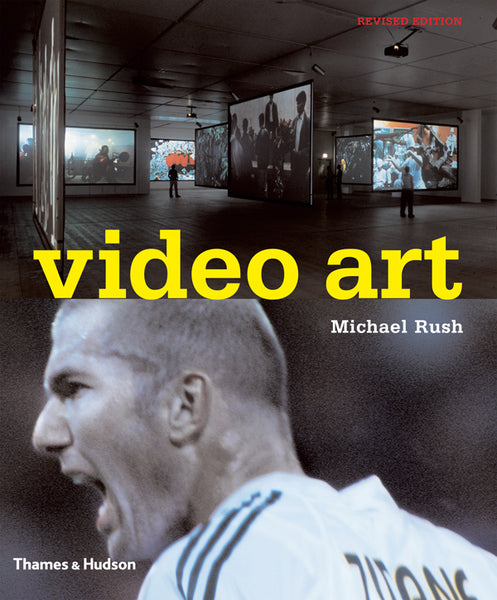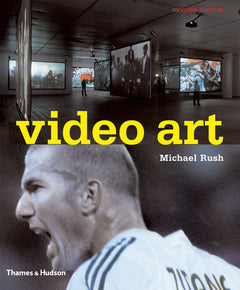Access Denied
IMPORTANT! If you’re a store owner, please make sure you have Customer accounts enabled in your Store Admin, as you have customer based locks set up with EasyLockdown app. Enable Customer Accounts

Video Art
Out of Stock- Regular price
- $43.99
- Sale price
- $43.99
- Regular price
-
- Unit price
- / per
A most complete survey of an ubiquitous art form born just over forty years ago
Video art has moved from brief showings on tiny screens in alternative art spaces to dominance in international exhibitions and artistic events, in which vast video installations sometimes occupy factory-sized buildings or the walls of an entire city block. It embraces all the significant art ideas and forms of recent times - from Abstract, Conceptual, Minimal, Performance and Pop art, to photography and film - and has been used creatively to extend, repeat, fast-forward, slow down and speed up time.
In this postmedium age, artists are combining and recombining video with a vast array of other materials - digital video, film, DVD, computer art, CD-ROM, graphics and animation - to form new artistic expressions.
Abundantly illustrated with frames and sequences, Video Art offers a history of the medium seen from the perspectives of its early practitioners - such as Bruce Nauman and Vito Acconci, who used the video camera as an extension of their own bodies - through the vast array of conceptual, political, personal and lyrical installations of the 1980s and 1990s by such artists as Gary Hill, Bill Viola, Iñigo Manglano-Ovalle, Mary Lucier and Michal Rovner, to the present digital revolution. In this postmedium age, artists are exploring the hybridization of technology, combining and recombining video with a vast array of other materials - digital video, film, DVD, computer art, CD-roms, graphics and animation - to form new artistic expressions.
Thanks to the ever-increasing availability of equipment, artists from all over the world - from China and India to Central America - are now coming to the fore. Michael Rush examines some of the most pioneering works and influences to have emerged internationally, as well as the recent use of video in what might be called 'the new cinematics' - not only in multi-screen installations mixing sound and visuals, but also immersive environments such as Virtual Reality, aesthetic surveillance, and alternative sculpture that combines solid forms with moving image.
In this postmedium age, artists are combining and recombining video with a vast array of other materials - digital video, film, DVD, computer art, CD-ROM, graphics and animation - to form new artistic expressions.
Abundantly illustrated with frames and sequences, Video Art offers a history of the medium seen from the perspectives of its early practitioners - such as Bruce Nauman and Vito Acconci, who used the video camera as an extension of their own bodies - through the vast array of conceptual, political, personal and lyrical installations of the 1980s and 1990s by such artists as Gary Hill, Bill Viola, Iñigo Manglano-Ovalle, Mary Lucier and Michal Rovner, to the present digital revolution. In this postmedium age, artists are exploring the hybridization of technology, combining and recombining video with a vast array of other materials - digital video, film, DVD, computer art, CD-roms, graphics and animation - to form new artistic expressions.
Thanks to the ever-increasing availability of equipment, artists from all over the world - from China and India to Central America - are now coming to the fore. Michael Rush examines some of the most pioneering works and influences to have emerged internationally, as well as the recent use of video in what might be called 'the new cinematics' - not only in multi-screen installations mixing sound and visuals, but also immersive environments such as Virtual Reality, aesthetic surveillance, and alternative sculpture that combines solid forms with moving image.
Extent: 256 pp
Format: Paperback
Illustrations: 475 illustrations, 372 in full colour
Publication date: 2007-05-01
Size: 28.2 x 23.3 cm
ISBN: 9780500284872

About the Author
Michael Rush (1949 - 2015) was an actor, writer and former Director of the Eli and Edythe Broad Art Museum at Michigan State University.
You May Also Like
View more
This product currently has no recommended items.
Sign up to our Newsletter
Our weekly newsletter is a curated collection of interviews, articles, stunning images and books we think you’ll love. Sign up to get 20% off.
In accordance with our privacy policy, you may unsubscribe at any time.
Invalid password
Enter
- Choosing a selection results in a full page refresh.

